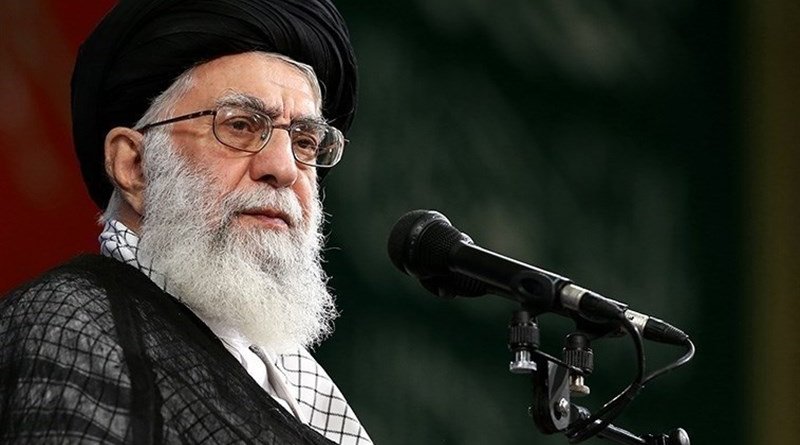Iran’s Election: Real Change Or More Of The Same? – OpEd
By Hamid Enayat
As the COVID-19 pandemic continues to impact countries and communities around the world, the Iranian government is holding their election for President. Article 115 of the regime’s Constitution and Article 35 of the election law set the threshold for Presidential candidates, limiting them to being Muslim males, those who are faithful to the Islamic Republic, and a commitment to the principle of absolute clerical rule.
Yet, despite the clear guidelines in the Iranian constitution, the unelected and handpicked Guardian Council continues to add further exclusions, meant to disqualify and curtail the reach of potentially troublesome candidates. These candidates are from the “Reformist” faction and are seen as not completely conforming to the will of the Supreme Leader, Ayatollah Khamenei.
In fact, the Guardian Council routinely disqualifies candidates, limiting potential candidates to those who meet specific criteria, including absolute allegiance to the Supreme Leader. They acknowledge him as the sole indisputable source of power, thus permitting their candidacy. The result is the Iranian people are left to vote only for those candidates that have already demonstrated loyalty to Khamenei, instead of a willingness to work for the benefit of the people.
Who is the Guardian Council and how are they appointed? This 12-member council includes six clerics and six jurists. Khamenei appoints the six clerics and the Judiciary Chief, who Khamenei appoints, chooses the six jurists. Essentially, all 12 members have Khamenei’s approval and thus they enforce his policies, especially in choosing the potential presidential candidates.
The Iranian presidency serves as a figurehead, having little impact on Iran’s domestic and foreign policy. Instead, they put forward the agenda already defined by the Supreme Leader. All the policy decisions made are then implemented by the various agencies controlled by his office. Any power exerted by the executive branch are challenged by the IRGC controlled power centers, thus making it clear who is really in charge.
Why would anyone want to take on the role of president, when it comes with little authority? Simply put, the Iranian presidency gives the winner a commanding role in state organizations and agencies, the ones that control the wealth of Iran, including its gas, oil, and petrochemical industries. Although still subject to Khamenei, they can tap into the corruption of this regime for their own benefit.
However, the presidency introduces a level of instability into Khamenei’s rule. The presidents of the past have stood in contrast to his absolute rule and these figureheads do not always follow the policies of the Supreme Leader. As a result, five of the former Iranian presidents have faced expulsion, ostracism, house arrest, and even murder for defying Khamenei.
Within this regime, the Supreme Leader has total power and no accountability to anyone, even the Iranian people. Although presidents might enjoy some individual power as part of the executive branch, ultimately Khamenei pulls all the strings. How will that impact this year’s election?
The Guardian Council will announce the final list of candidates on May 26 and 27. Campaigning will continue until June 17th. Since the Khomeini passed power to Khamenei, skepticism among regime loyalists caused factions to be created. These factions then fight for the presidency and the potential financial windfall they can enjoy. Each faction then does whatever possible to make it appear as if they are a legitimate leader, even using fraudulent votes. While it might appear that the Iranian people are participating in the election, in truth, the results tend to reflect the current power balance between the factors.
In 2005, Mahmoud Ahmadinejad’s election was engineered, despite widespread public outcry. Rouhani was pushed through in 2013 based on false promises of improving the lives of the people. The Iranian people are reaching the point where they see the government not putting them first. Instead, corruption is widespread and that has resulted in squandering the natural resource of Iran and driving the people deeper into poverty, while erasing the middle class.
Six months after the June 2017 elections, the uprisings demonstrated that the Iranian people rejected both factions. Increased voter apathy and election boycotts are warning of an unprecedently low turnout. Yet, Khamenei continues to push to retrench himself in the face of popular discontent with the regime and international isolation. The lack of participation in the election shows that the Iranian people are putting the legitimacy of the regime’s rule in question.
Khamenei is focused on protecting his regime and maintaining power, including pushing his presidential candidate into the winner’s circle. Yet, his faction has not clearly indicated who that candidate is. Meanwhile, there is an insurrection brewing within Iran, while the international community is putting Iran into a position of irrelevance. For the Iranian people, change will not come from the regime but from their push for a complete change of government.

